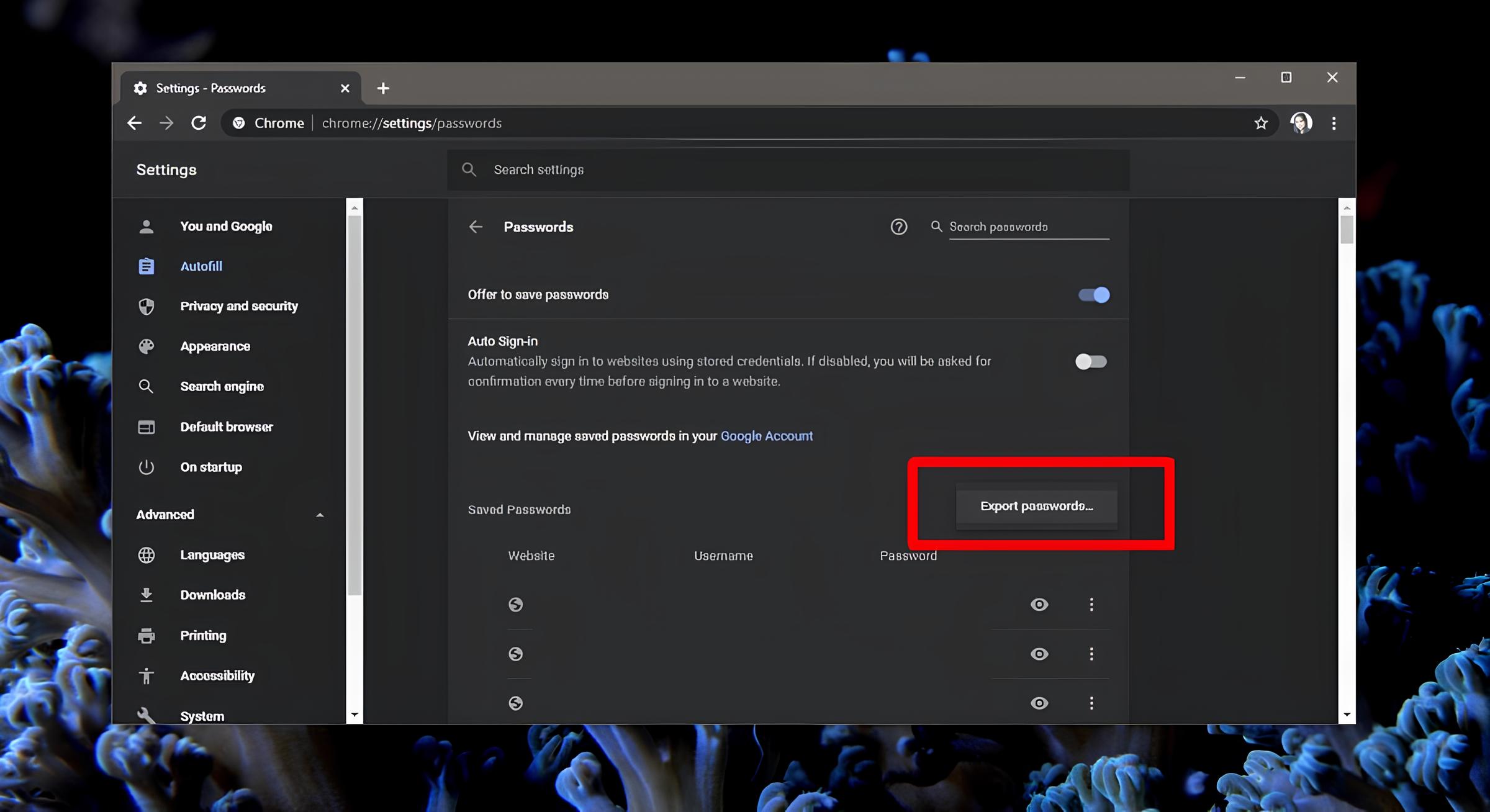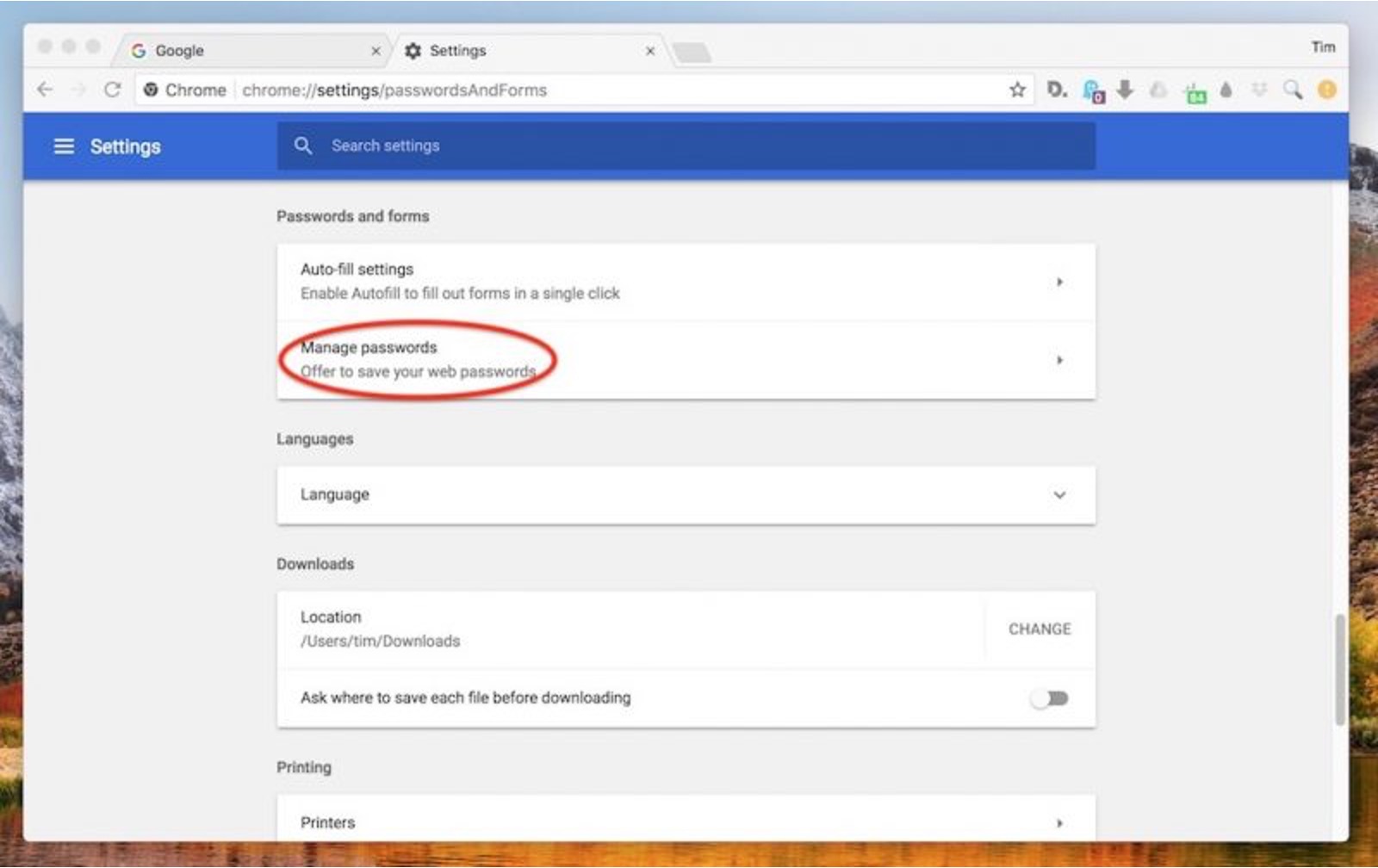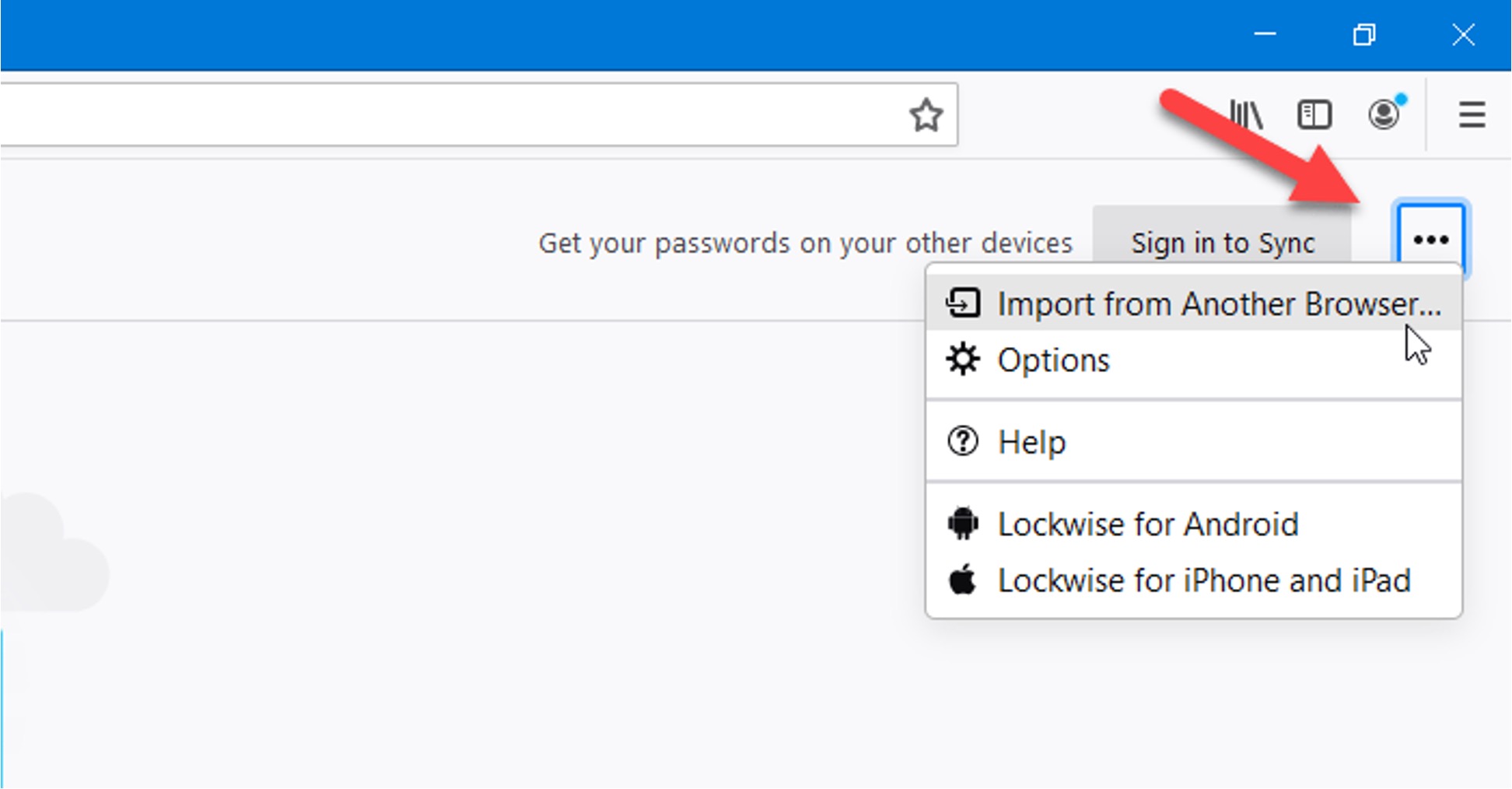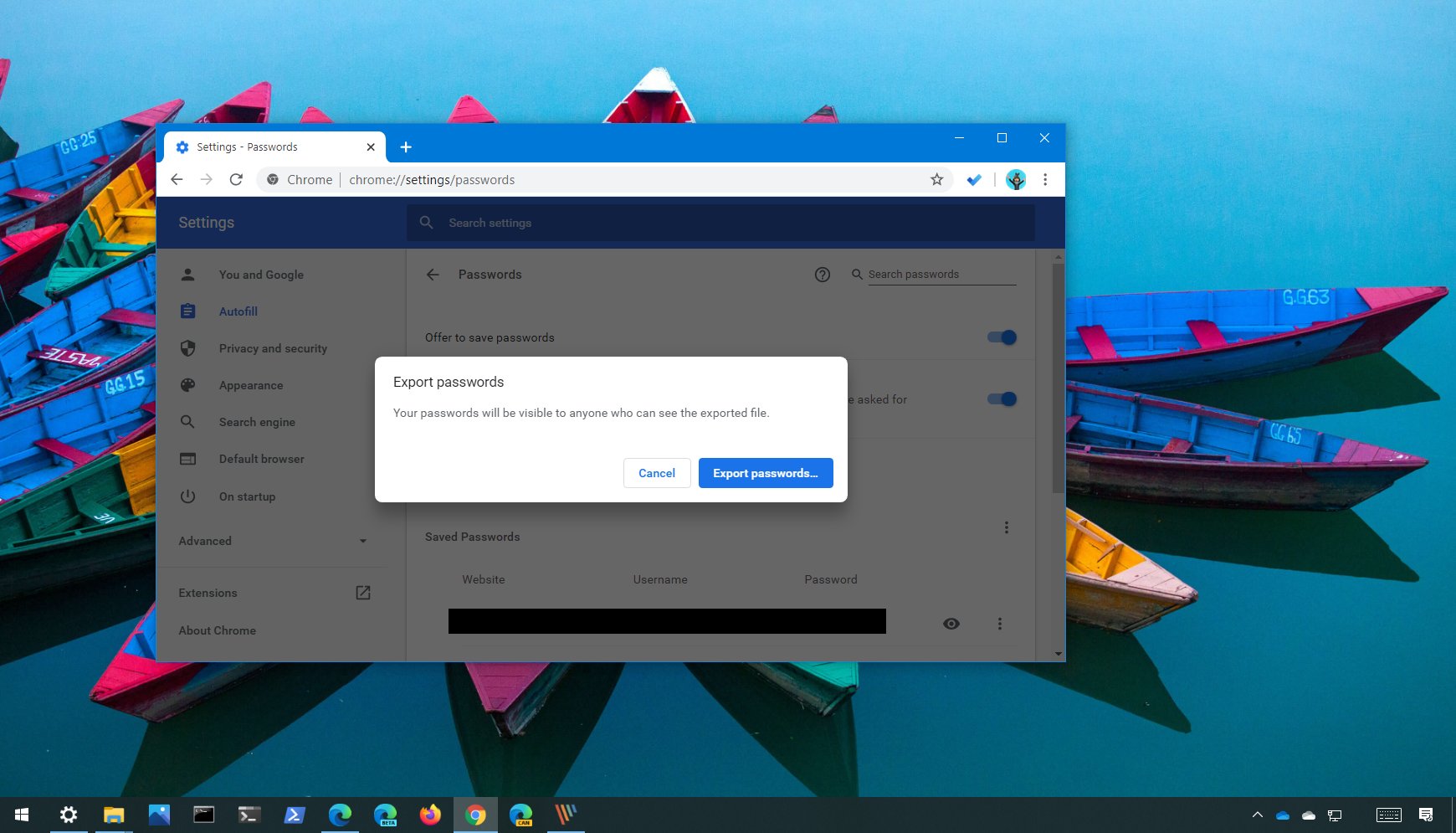Introduction
Chrome's built-in password manager is a convenient feature that securely stores and autofills your login credentials for various websites. However, there are instances when you might need to export these saved passwords, such as when switching to a new browser or when backing up your data. In this guide, we will walk you through the process of exporting Chrome saved passwords, allowing you to seamlessly transfer them to another browser or keep them as a backup.
Exporting Chrome saved passwords can be a valuable practice, especially if you want to maintain a consistent browsing experience across different browsers or ensure that your login information is safely stored in multiple locations. By following the steps outlined in this article, you will gain the ability to export your saved passwords from Chrome and import them into another browser, providing you with added flexibility and peace of mind.
Whether you are a tech-savvy individual or someone who is new to managing browser data, this guide will provide you with clear and actionable instructions to export your Chrome saved passwords. With a few simple steps, you can safeguard your login credentials and streamline your browsing experience across different platforms. Let's dive into the process of accessing, exporting, and importing Chrome saved passwords, empowering you to take full control of your online security and convenience.
Step 1: Accessing Chrome Saved Passwords
Accessing your saved passwords in Chrome is a straightforward process that allows you to view and manage the login credentials stored within the browser. Follow these simple steps to access your Chrome saved passwords:
-
Open Chrome Settings: Launch Google Chrome on your computer and click on the three-dot menu icon located in the top-right corner of the browser window. From the dropdown menu, select "Settings" to access the browser's settings and customization options.
-
Navigate to Passwords: Within the Settings menu, scroll down and click on the "Passwords" option. This will direct you to the password management section, where you can view and manage your saved passwords.
-
View Saved Passwords: Upon selecting the "Passwords" option, you will be presented with a list of websites for which Chrome has saved your login credentials. Each entry will display the website's URL, your username, and an option to reveal the saved password.
-
Authenticate Access: To view the saved passwords, Chrome may prompt you to authenticate your identity using your computer's login credentials or another verification method. This additional layer of security ensures that only authorized users can access the stored passwords.
-
Review and Manage: Once you have accessed your saved passwords, take the opportunity to review the list and ensure that it accurately reflects the websites for which you want Chrome to store your login information. You can also edit or remove saved passwords as needed, providing you with full control over your stored credentials.
By following these steps, you can easily access your saved passwords within Chrome, empowering you to review, manage, and utilize your login credentials with ease. This accessibility allows you to maintain a clear overview of the websites for which Chrome has stored your passwords, enabling you to make informed decisions about your online security and convenience.
Step 2: Exporting Chrome Saved Passwords
Exporting your saved passwords from Chrome is a valuable practice that allows you to create backups or seamlessly transfer your login credentials to another browser. While Chrome does not offer a built-in feature to directly export passwords to a file, you can still achieve this through a simple yet effective method. Here's how you can export your Chrome saved passwords:
-
Access Chrome Settings: Begin by opening Google Chrome on your computer and accessing the browser's settings. Click on the three-dot menu icon in the top-right corner of the window and select "Settings" from the dropdown menu.
-
Navigate to Passwords: Within the Settings menu, scroll down and click on the "Passwords" option. This will take you to the password management section, where you can view and manage your saved passwords.
-
Export Saved Passwords: While Chrome does not provide a direct export option, you can use a third-party password management tool or a browser extension to export your saved passwords. There are several reputable extensions available in the Chrome Web Store that enable you to export passwords to a CSV or other file formats.
-
Install a Password Export Extension: Search for a password export extension in the Chrome Web Store and select a trusted extension that suits your preferences. Install the extension to add its functionality to your browser.
-
Follow Extension Instructions: Once the extension is installed, follow its specific instructions to export your saved passwords. Typically, you will be prompted to select the passwords you want to export and choose the file format for the export, such as CSV (Comma-Separated Values) or another compatible format.
-
Save the Exported File: After selecting the passwords and specifying the export format, the extension will generate a file containing your saved passwords. Save this file to a secure location on your computer, ensuring that it is accessible when needed.
By following these steps, you can effectively export your saved passwords from Chrome using a trusted browser extension or password management tool. This process empowers you to create backups of your login credentials or seamlessly transfer them to another browser, providing you with added flexibility and control over your stored passwords. With your passwords exported to a secure file, you can proceed to import them into another browser or keep them as a backup for future use.
Step 3: Importing Chrome Saved Passwords to Another Browser
Importing your Chrome saved passwords to another browser is a seamless process that allows you to transfer your login credentials and maintain a consistent browsing experience across different platforms. Whether you are transitioning to a new browser or simply want to utilize your saved passwords in multiple environments, importing Chrome saved passwords can streamline your access to various websites. Here's a detailed guide on how to import your Chrome saved passwords to another browser:
-
Select Target Browser: Begin by launching the browser to which you want to import your Chrome saved passwords. Ensure that the target browser supports the import of passwords from external sources, as not all browsers offer this functionality by default.
-
Access Browser Settings: Navigate to the settings or preferences menu of the target browser. Look for the option related to password management, import, or security settings, as this is where you will find the feature to import external passwords.
-
Locate Import Option: Within the browser settings, locate the specific option for importing passwords or external data. This may be listed under a section related to security, privacy, or advanced settings, depending on the browser's interface and organization of features.
-
Choose Import Source: When prompted to select the import source, choose the option that allows you to import passwords from an external file or another browser. Some browsers may provide a direct option to import from Chrome, while others may require you to select a file containing your saved passwords.
-
Select Exported File: If the target browser requires you to provide a file for importing passwords, navigate to the location where you saved the exported file from Chrome. Select the file containing your saved passwords and proceed to initiate the import process.
-
Authenticate Access: Depending on the security measures implemented by the target browser, you may be prompted to authenticate your identity before the import process is completed. This can involve entering your computer's login credentials or using another verification method to ensure secure access to the imported passwords.
-
Review Imported Passwords: Once the import process is finalized, take the time to review the imported passwords within the target browser. Ensure that all your login credentials have been accurately transferred and are readily available for use.
By following these steps, you can effectively import your Chrome saved passwords to another browser, enabling you to seamlessly utilize your login credentials across different platforms. This streamlined process empowers you to maintain a consistent browsing experience while securely accessing your saved passwords in the target browser. Whether you are switching to a new browser or seeking to utilize your saved passwords in multiple environments, importing Chrome saved passwords provides you with enhanced flexibility and convenience in managing your online credentials.

























